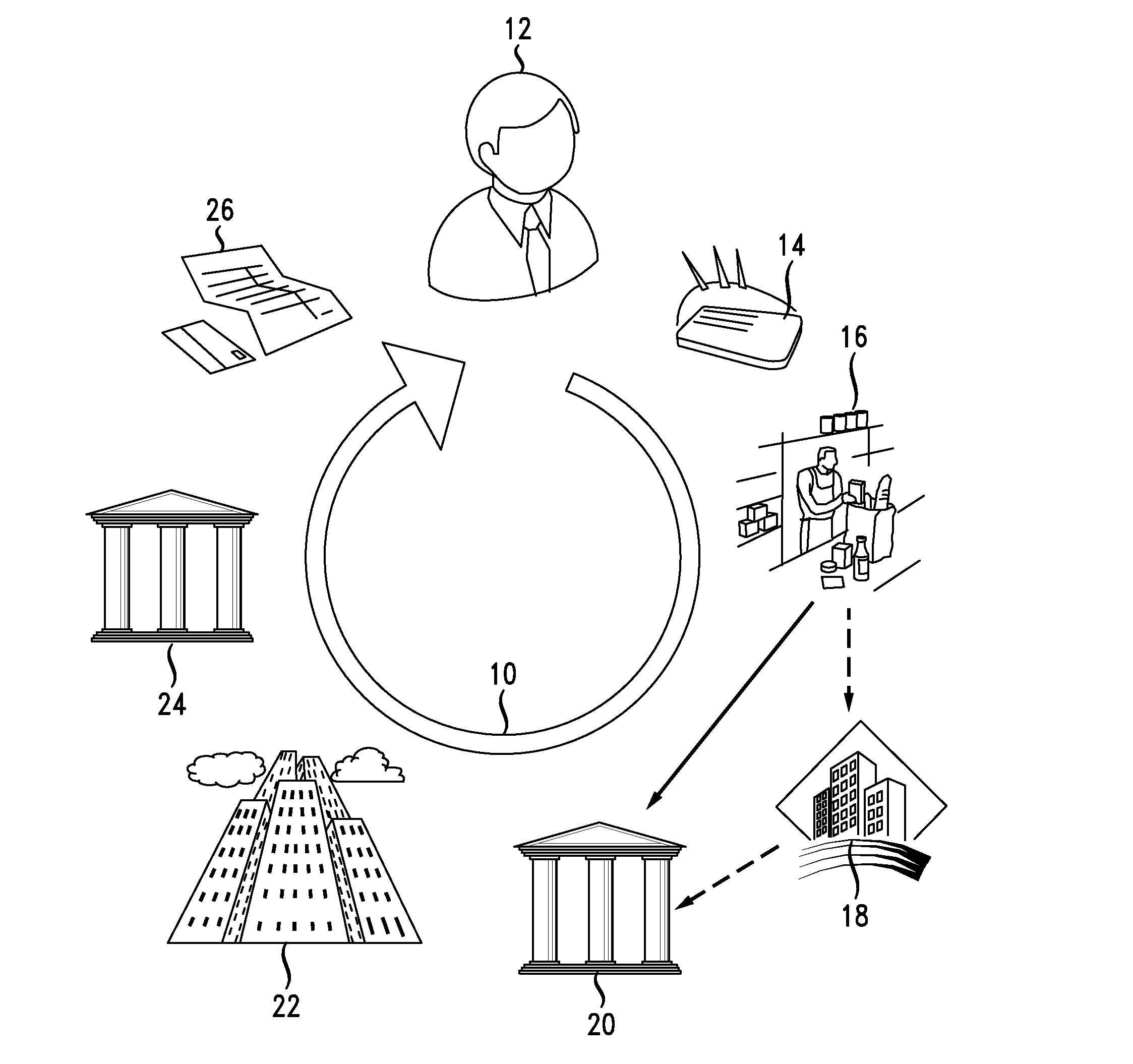Merchant data cleansing in clearing record
a technology of clearing record and data, applied in the field of electronic transaction processing, can solve the problems of reducing chargeback requests, poor data quality of acquirers b, etc., and achieve the effect of reducing costs
- Summary
- Abstract
- Description
- Claims
- Application Information
AI Technical Summary
Benefits of technology
Problems solved by technology
Method used
Image
Examples
first embodiment
[0049]Referring now to FIG. 2, illustrated is a flowchart, generally 100, describing the process for implementing merchant data cleansing according to the instant disclosure. The flowchart 100 is divined into three vertical layers, a first layer 102 representing actions of the acquirer 20, a second and intermediate layer 104 representing the actions of a network operator 22, and a third layer 106 representing the actions of an issuer 24. An acquirer 20 begins the process 108 and submits 110 to the network operator 22 their first presentments of completed transactions in an inbound clearing file to clear the transactions. The network operator 22 checks the submission for conformance with its standards 112. If found out of compliance it is rejected and returned 114 to the acquirer 20. If found in compliance, the process proceeds 116.
[0050]The network operator 20 next determines at 118 whether the ICA and / or BIN derived from the payment device 14 that is associated with any particular ...
second embodiment
[0063]As a matter of nomenclature, the second embodiment includes so-called “add-on” data with the cleansed merchant data. Add-on data is data that does not merely replace the merchant data provided by the acquirer 20 in the transaction data with more palatable form or content of cleansed merchant data. Add-on data is data specific to the merchant that would not have been included in the transaction clearing record according to present standards, but is nonetheless useful or valuable to the issuer. Add-on data may include, without limitation: a legal entity name of the merchant (contrasted with the merchant's DBA name); a relative percentage source of the merchant's sales, for example whether they originate in retail stores (aka, brick-and-mortar, or simply brick), on the internet or online, and any other sales channels; merchant URL.
[0064]From the beginning of the second embodiment process 208, the second embodiment deviates from the first embodiment of the present disclosure in th...
third embodiment
[0074]As a matter of nomenclature, the third embodiment includes so-called “Merchant Aggregation” data with the cleansed merchant data. Merchant aggregation data is data that does not replace the merchant data provided by the acquirer 20 in the transaction data with more palatable form or content of cleansed merchant data. Merchant aggregation data is data related to the merchant when considered in the aggregate, i.e., data that is beyond the scope of information concerning the particular merchant where the transaction is consummated, and more particularly where that merchant is part of a larger aggregation (e.g., chain or franchise). Merchant aggregation would not have been included in the transaction clearing record according to present standards, but is nonetheless useful or valuable to the issuer. Merchant aggregation data may include, without limitation: An identifier of the aggregate merchant concern; the name of the aggregate merchant concern; an industry code related to the ...
PUM
 Login to View More
Login to View More Abstract
Description
Claims
Application Information
 Login to View More
Login to View More - R&D
- Intellectual Property
- Life Sciences
- Materials
- Tech Scout
- Unparalleled Data Quality
- Higher Quality Content
- 60% Fewer Hallucinations
Browse by: Latest US Patents, China's latest patents, Technical Efficacy Thesaurus, Application Domain, Technology Topic, Popular Technical Reports.
© 2025 PatSnap. All rights reserved.Legal|Privacy policy|Modern Slavery Act Transparency Statement|Sitemap|About US| Contact US: help@patsnap.com



